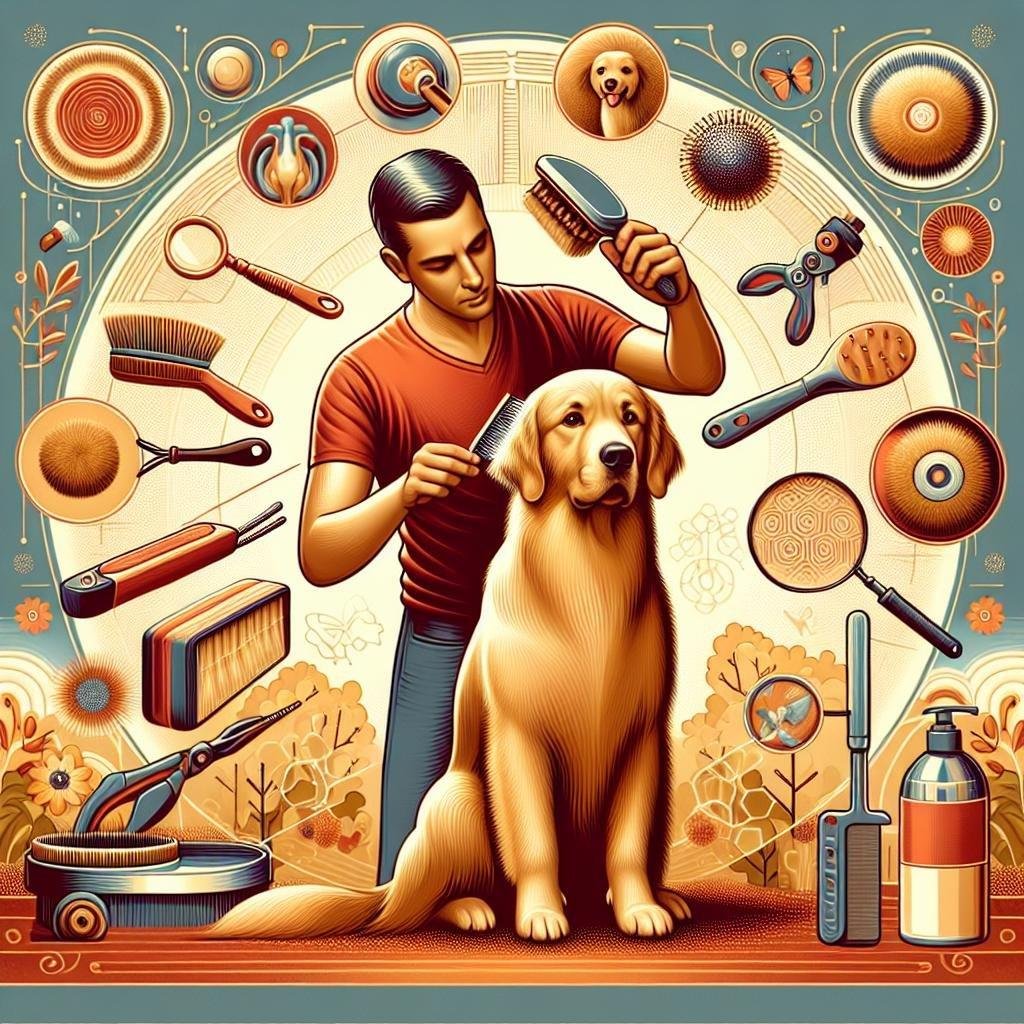
Check out our latest products
When it comes to pet care, grooming is ofen one of the most overlooked aspects, yet it plays a crucial role in maintaining your furry friend’s health and happiness. Whether you have a long-haired golden retriever, a short-haired tabby cat, or anything in between, regular brushing is essential for keeping their coat in optimal condition. Not only does it help reduce shedding and prevent matting, but it also promotes a healthy skin and coat through the distribution of natural oils. In this essential guide, we’ll walk you through the best practices for brushing your pet’s coat correctly, including tips on choosing the right tools, techniques for different coat types, and how to make grooming an enjoyable experience for both you and your pet. Let’s dive into the finer points of brushing to ensure your companion looks and feels their best!
Table of Contents
- Understanding the Importance of Regular Coat Brushing
- Choosing the Right Tools for Different Coat Types
- Techniques for Effective Brushing to Avoid Matting
- Establishing a Brushing Routine that Works for Your Pet
- In Summary
Understanding the Importance of Regular Coat Brushing
Regular coat brushing is essential for maintaining your pet’s overall health and appearance.Not only does it help reduce shedding, but it also prevents matting, which can cause discomfort and skin issues.Moreover, brushing stimulates the skin’s natural oils, promoting a healthy and shiny coat. By establishing a brushing routine, pet owners can also bond with their furry companions, making grooming a positive experience for both.
Different breeds require varying grooming schedules and techniques. For instance,dogs with long hair may need daily brushing,while shorter-haired breeds might only need to be brushed once a week. Here are some benefits to consider:
- Reduces Allergens: Brushing removes dander and dust, helping allergy sufferers.
- detects Parasites: Regular grooming allows you to spot fleas,ticks,or other skin conditions early.
- Saves on Grooming Costs: Keeping up with home brushing can reduce the need for professional grooming.
| Breed Type | Brushing Frequency |
|---|---|
| Long-Haired Dogs | Daily |
| Short-Haired Dogs | Weekly |
| Long-Haired Cats | Every Other Day |
| Short-Haired cats | Weekly |
Choosing the Right Tools for Different Coat Types
Choosing the right grooming tools is essential for maintaining your pet’s coat and ensuring their comfort. Different coat types require specific brushes or combs to effectively remove dirt, loose hair, and tangles. For example, short-haired breeds typically do well with a soft bristle brush or grooming mitt, which helps distribute natural oils and keep their coats sleek and shiny.Conversely,long-haired breeds benefit from a wide-toothed comb or a slicker brush,which can effectively detangle and remove mats without pulling on the skin.
Understanding the unique characteristics of each coat type will enable you to select the most effective tools.For instance, wire-haired breeds require a unique approach, often necessitating a pin brush to maintain their rough texture, while curly-haired dogs can be best managed with a de-shedding tool or rake designed to navigate their wavy fur without causing damage. Here’s a speedy reference table for suitable tools according to different coat types:
| Coat type | Recommended Tools |
|---|---|
| Short-haired | Soft bristle brush, grooming mitt |
| Long-haired | Wide-toothed comb, slicker brush |
| Wire-haired | Pin brush |
| Curly-haired | De-shedding tool, rake |
Techniques for Effective Brushing to Avoid Matting
To maintain a well-groomed coat and prevent matting, it’s essential to adopt a brushing technique that caters to your pet’s unique coat type. Start by choosing the right brush: slicker brushes are perfect for long-haired breeds, while bristle brushes work well for short-haired pets. Before you begin brushing, gently run your fingers through your pet’s coat to identify any knots or tangles.For best results, follow these steps:
- Brush in the direction of hair growth to minimize discomfort.
- Divide the coat into sections for easier management, especially for thick or long fur.
- Use a detangler spray, if necessary, to loosen stubborn knots without pulling.
- Be gentle around sensitive areas like the belly, ears, and tail.
- Finish with a comb to catch any remaining loose fur and to ensure a thorough grooming.
consistency is key in maintaining a mat-free coat. Aim for regular brushing sessions: daily for long-haired breeds and at least once a week for short-haired ones. Incorporate brushing into cozy bonding time with your pet,which helps them associate grooming with positive experiences. Below is a simple table to help you remember the ideal brushing frequency based on coat type:
| Coat type | Brushing Frequency |
|---|---|
| Long-haired | Daily |
| Medium-haired | 2-3 times a week |
| Short-haired | Once a week |
Establishing a Brushing routine that Works for Your Pet
Creating a brushing routine that suits your pet’s needs is crucial for maintaining a healthy and shiny coat.Start by determining the type of coat your pet has, as this will influence the frequency and tools needed for grooming.For short-haired breeds, brushing once a week may suffice, while long-haired breeds might require more frequent sessions, ideally two to three times a week. Establishing a regular schedule will not only keep fur at bay but also strengthen the bond you share with your pet during these moments of care.
To make brushing a positive experience, choose a time when your pet is calm, such as after a meal or a walk. Use positive reinforcement techniques by rewarding your furry friend with treats or affection after each grooming session. Here’s a quick guide to help you get started:
| Coat Type | Recommended Frequency | Tools |
| Short Hair | Once a week | Rubber brush, bristle brush |
| Medium hair | Twice a week | Pin brush, slicker brush |
| Long Hair | Two to three times a week | Wide-tooth comb, slicker brush |
Incorporate short brushing sessions into your pet’s routine to avoid overwhelming them. Gradually increase the duration as they become more agreeable. Patience is key! By making brushing a regular and enjoyable activity, you’ll contribute significantly to your pet’s overall well-being and coat health.
In Summary
maintaining your pet’s coat is not just about aesthetics; it plays a crucial role in their overall health and well-being. By following the tips outlined in this essential guide, you can ensure that brushing your furry friend becomes a rewarding experience for both of you. Remember to choose the right tools, be gentle and patient, and make it a regular part of your pet care routine. Not only will this strengthen your bond with your pet, but it will also keep their coat healthy and free from tangles and discomfort. Happy brushing!










